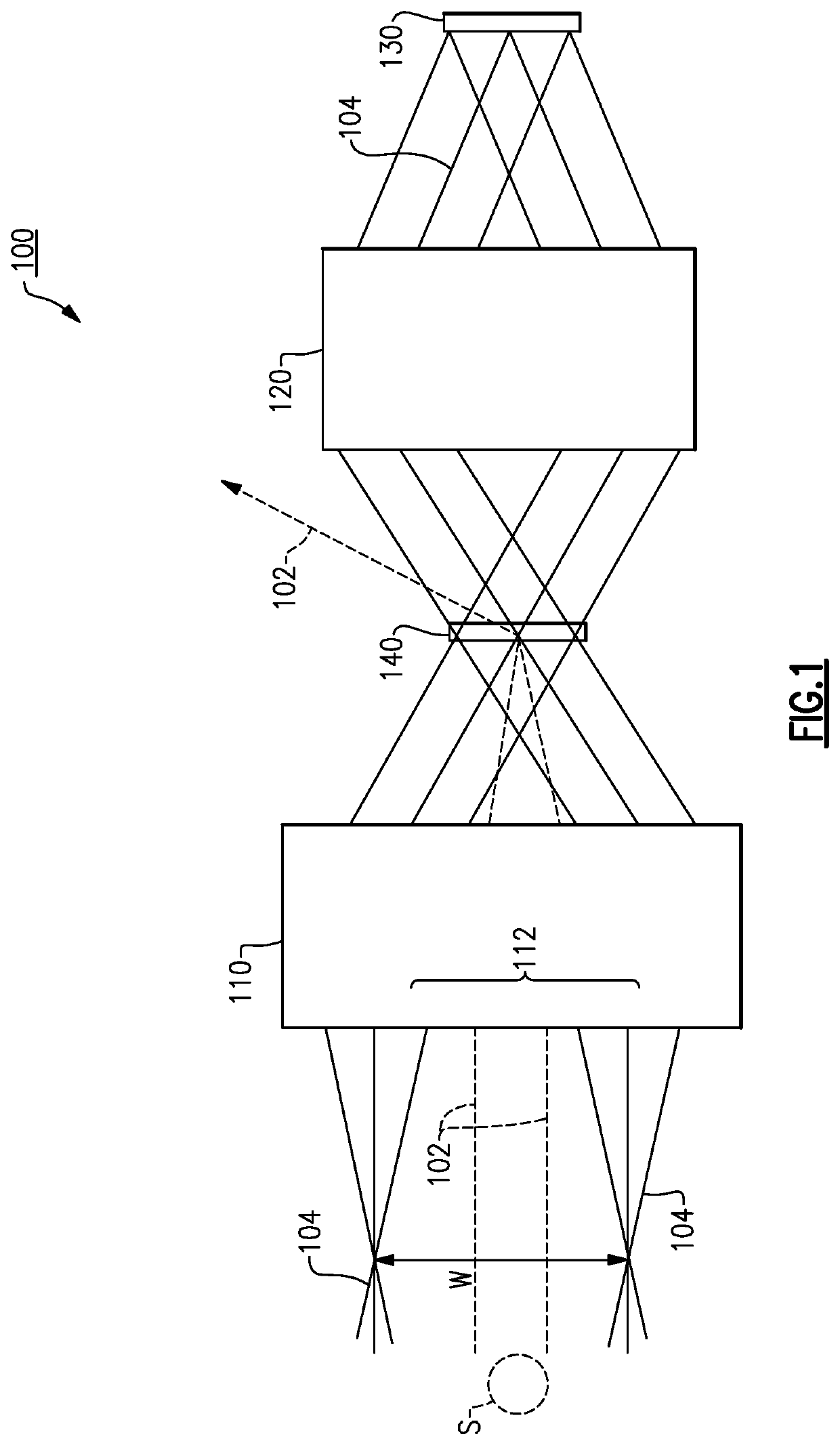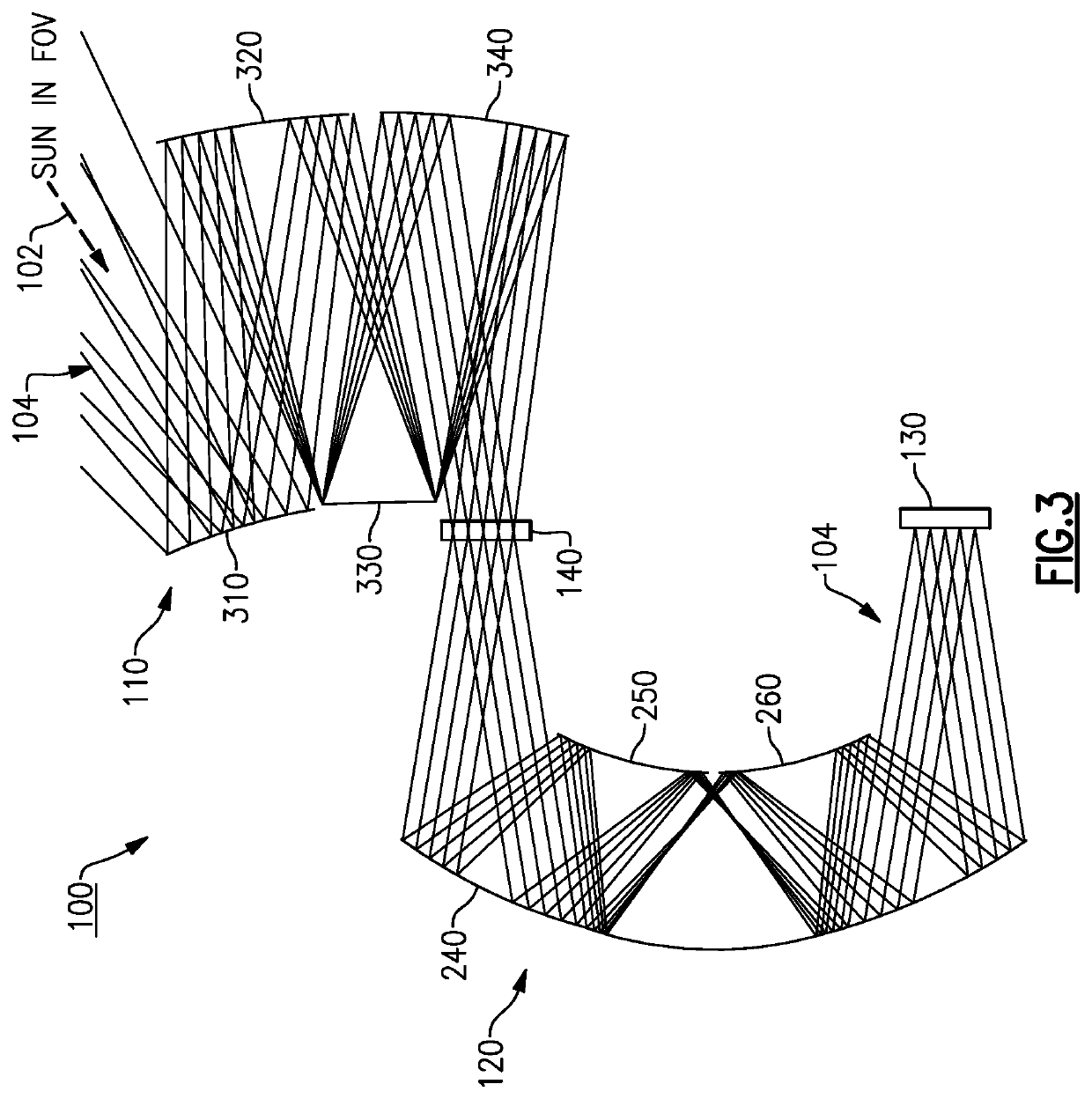All-reflective solar coronagraph sensor and thermal control subsystem
a solar coronagraph and sensor technology, applied in the field of all-reflective solar coronagraph sensor and thermal control subsystem, can solve the problems of significant image quality degradation, unsuitability for intended purposes, and difficult to see objects close to solar lines of sight (e.g., near the sun) for long periods of tim
- Summary
- Abstract
- Description
- Claims
- Application Information
AI Technical Summary
Benefits of technology
Problems solved by technology
Method used
Image
Examples
Embodiment Construction
[0028]Aspects and embodiments are directed to an all-reflective solar coronagraph that includes a thermal control subsystem and is configured to continuously image objects, optionally in two spectral bands (e.g., infrared and visible), located as close as 0.5 degrees to the Sun. Embodiments of the solar coronagraph includes an all-reflective relayed optical path, a sensor assembly that may include a visible photosensitive detector (e.g., a focal plane array) and an infrared photosensitive detector, and thermal control subsystem that rejects the direct solar image of the Sun and radiatively exhausts the thermal loads from the mirrors to peripheral radiator panels. As discussed further below, a MEMS-based digital micromirror device (DMD) can be used to reject the solar image. The DMD can be dynamically controlled such that the direct solar image can be rejected with the Sun anywhere in the field-of-view, thereby removing any need for the center of the field of view of the solar corona...
PUM
 Login to View More
Login to View More Abstract
Description
Claims
Application Information
 Login to View More
Login to View More - R&D
- Intellectual Property
- Life Sciences
- Materials
- Tech Scout
- Unparalleled Data Quality
- Higher Quality Content
- 60% Fewer Hallucinations
Browse by: Latest US Patents, China's latest patents, Technical Efficacy Thesaurus, Application Domain, Technology Topic, Popular Technical Reports.
© 2025 PatSnap. All rights reserved.Legal|Privacy policy|Modern Slavery Act Transparency Statement|Sitemap|About US| Contact US: help@patsnap.com



